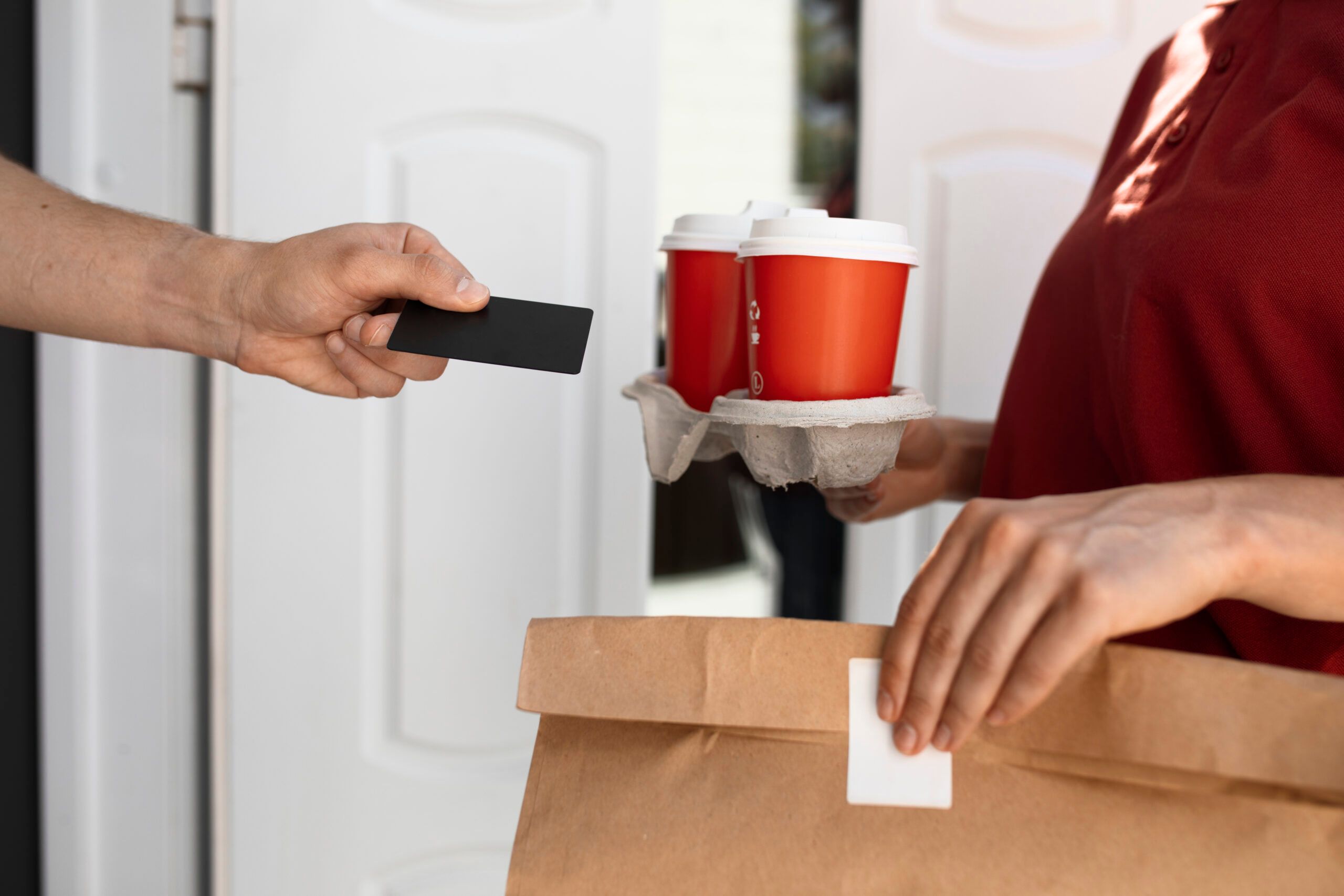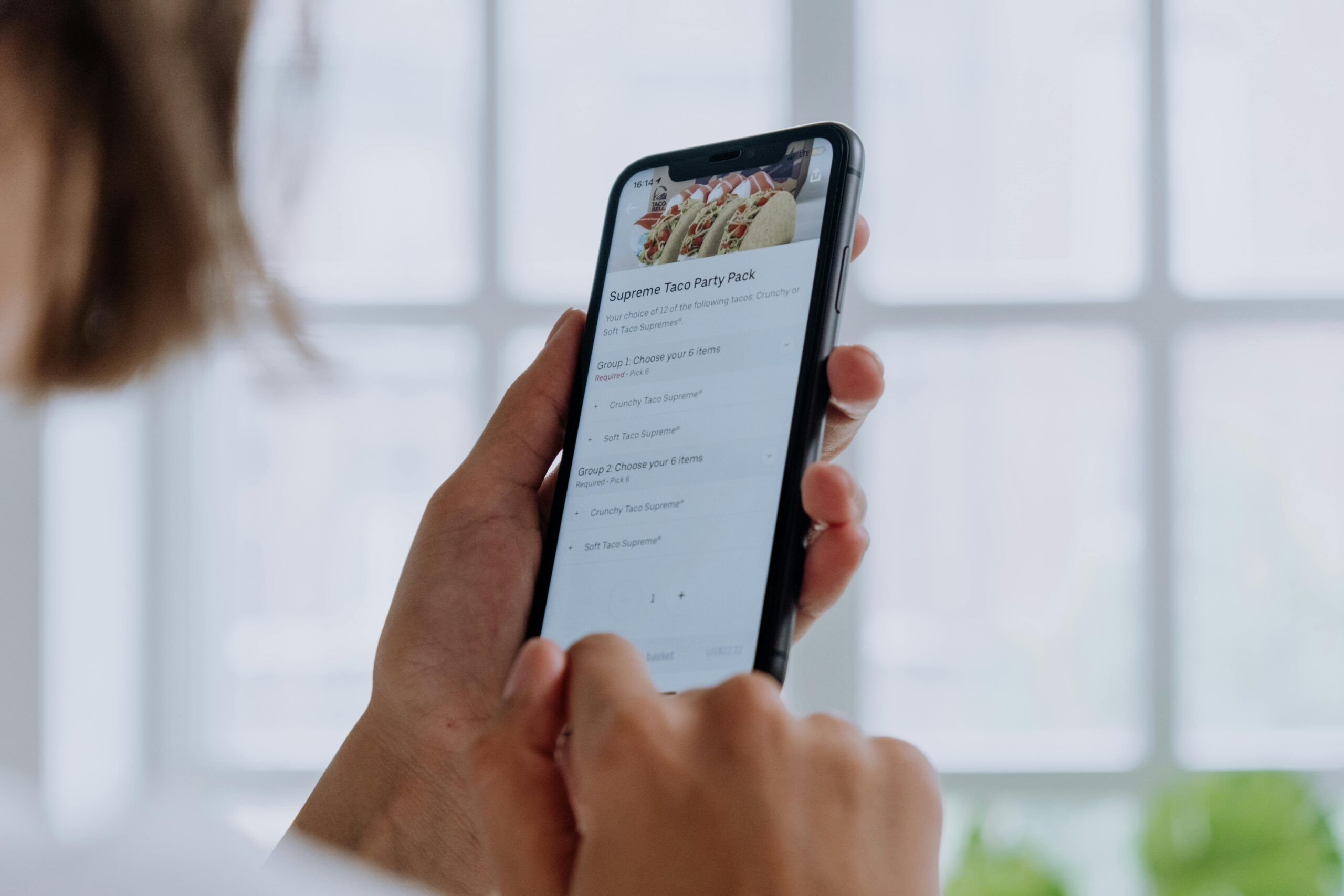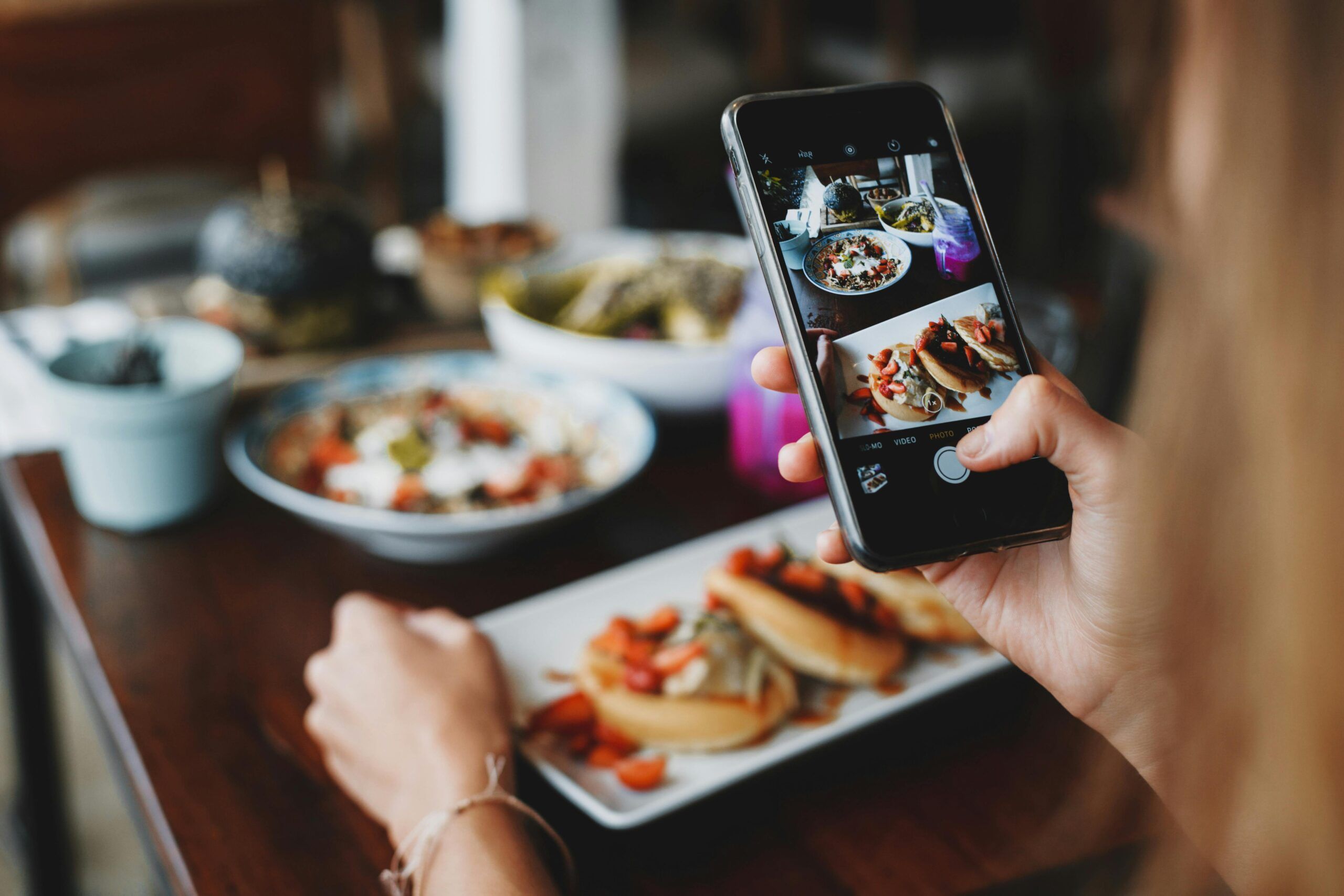- Understanding Third-Party Delivery Platforms
- The Real Cost Of Fragmentation
- What Integration Really Means (And What It Doesn’t)?
- Key Features To Look For In An Integration Solution
- Step-by-Step Integration Process (Using Orders.co as an Example)
- Beyond Delivery – Why You Still Need Direct Ordering?
- Real Restaurant Examples Using Integration Successfully
- FAQ
If your restaurant uses apps like Uber Eats, DoorDash, or Grubhub, you’ve likely faced the daily challenge of managing multiple systems at once. One order pops up on one tablet, another on a second, and your team is stuck tapping between screens during your busiest hours. That’s time lost—and mistakes made.
That’s where third-party delivery integration comes in.
Instead of managing each app separately, third-party delivery integration lets you view and manage all incoming orders in one place. It keeps your staff focused and helps you stay on top of orders without bouncing between devices.
In this guide, we’ll explain how 3rd party delivery services work, what integration means, and what to expect from a reliable solution. We’ll also show you how Orders.co’s restaurants’ online ordering management system makes it easier to manage your delivery business with fewer tools and better control.
This article is for you if you’re looking for a simpler way to handle third-party delivery apps. And if you’re ready to stop losing time (and orders), our team at Orders.co can help.
Key Takeaways
- Managing multiple delivery apps manually leads to errors, stress, and missed orders.
- Third-party delivery integration brings all platforms into one dashboard, saving time and reducing mistakes.
- A proper integration system should support menu sync, real-time orders, reporting, and POS connections.
- Direct ordering is still important to maximize profits and control the customer experience.
- Orders.co helps restaurants simplify delivery, update menus faster, resolve disputes, and improve reporting.
- You don’t need to be tech-savvy to set up integration—support is included every step of the way.
- Combining third-party delivery integration with direct online ordering creates a stronger, more profitable model.
Understanding Third-Party Delivery Platforms
Third-party delivery services connect your restaurant with customers through apps like DoorDash, Uber Eats, and Grubhub. In the US, 4 in 10 consumers order through a third-party app at least 5 times a month, compared to 2 in 10 orders via phone call.
These platforms handle delivery logistics, customer ordering, and payments, while you focus on preparing the food.
While signing up with one or two services can boost visibility and sales, most restaurants use three or more apps. That means more reach but also more complexity.
Each third-party delivery platform has its own tablet, app interface, and set of rules. This leads to issues like:
That’s why more restaurants are moving toward third-party delivery integration. Instead of working with each platform separately, integration tools connect your delivery apps into a single system, giving you one dashboard for everything.
3rd party delivery platform integration is not about replacing these apps. It’s about managing them more smartly. With the proper setup, you keep all the benefits of 3rd party delivery services while cutting the friction out of the process.
The Real Cost Of Fragmentation
Running multiple third-party delivery apps without integration might seem manageable at first, but the small problems add up fast.
- Missed and Incorrect Orders: Switching between tablets during a rush can make it easy to miss an order or send the wrong one. This can lead to refund requests, bad reviews, and lost repeat business.
- Wasted Labor: Your staff spends time entering the same info across platforms or checking multiple tablets. That’s time they could use to prep food or help guests in-store. Even five minutes lost per order adds up across a week.
- Inconsistent Menus: Without third-party delivery integration, you have to update each platform individually. One typo or outdated price on a single app can lead to customer complaints and revenue loss.
- Limited Reporting: Tracking each 3rd party delivery service’s performance is tough when your data lives in separate places. That makes it harder to know which platforms drive the most value and where to focus your time.
- Increased Stress: Juggling platforms creates confusion in the kitchen and front of house. When orders start coming in from all sides, it’s harder to keep up—and easy to make mistakes.
These issues affect operations, profit margins, staff ability to do their jobs, and customers’ experience.
What Integration Really Means (And What It Doesn’t)?
There’s a lot of confusion around what third-party delivery integration actually is. So, let’s clarify it.
What It Means
Integration connects your third party delivery apps—like DoorDash, Uber Eats, and Grubhub—to a central system. Instead of managing each platform separately, you can:
✅ See all orders in one place (tablet or POS)
✅ Sync your menu across all apps from one dashboard
✅ Send all orders to the kitchen printer automatically
✅ Get performance reports across all channels
✅ Adjust prep times or pause orders for all apps at once
This saves time, reduces errors, and gives you more control.
What It Doesn’t Mean
❌ Integration isn’t about replacing the delivery apps themselves. You still work with those platforms—you just don’t have to manage them separately.
❌ It also doesn’t mean you give up flexibility. You can still run promos, pause delivery, or update hours on individual platforms as needed. But you do it from one place.
❌ Lastly, integration is not a one-size-fits-all solution. Some systems only pull in orders. Others include menu sync, POS connection, and delivery settings. That’s why it’s crucial to choose the right provider.
❌ In short, third-party delivery integration doesn’t change who you partner with. It changes how you manage those relationships, making your systems work together instead of against each other.
Next, we’ll show you the must-have features for any good integration tool.
Key Features To Look For In An Integration Solution
Not all third-party delivery integration tools are created equal. If you’re choosing one for your restaurant, these are the features that make the difference between a system that works—and one that creates new problems.
- Real-Time Order Consolidation: You should be able to receive all delivery orders, regardless of platform, on one screen in real time. There should be no switching tablets, and there should be no delays.
- Menu Sync Across Platforms: A good integration tool lets you update your menu once and push changes to all connected third-party delivery apps. This prevents mismatches, wrong pricing, and “out of stock” confusion.
- POS Compatibility: If you use a point-of-sale system, make sure your third-party delivery integration connects with it. That way, orders flow directly to your kitchen and reporting tools, without manual re-entry.
- Flexible Order Management: Look for options to pause delivery, adjust prep time, or block specific items during high-volume hours—all from one place.
- Centralized Reporting: You should be able to view performance by platform, location, and period. Knowing what’s working—and what’s not—is key to profitably managing third-party delivery services.
- Reliable Support: When running deliveries during a busy dinner shift, the last thing you want is tech trouble. Choose a provider with responsive, restaurant-specific support.
The goal is simple: pick a tool that takes complexity off your plate. In the next section, we’ll show you how to make the right call when choosing a partner for third-party delivery integration.
Also, read:
- 10 Best Restaurant Online Food Ordering Systems For Seamless Restaurant Operations
- How To Increase Restaurant Delivery Sales With Online Ordering
- 5 Effective Ways To Boost Restaurant Delivery Efficiency Across All Platforms
- How To Successfully Negotiate Lower Commissions With Food Delivery Apps?
- How Do Delivery App Commissions Impact Your Restaurant’s Overall Profitability?
- 5 Ways To Adjust Your Restaurant Pricing Strategy To Account For Delivery App Fees
Step-by-Step Integration Process (Using Orders.co as an Example)
Getting started with third-party delivery integration doesn’t have to be technical or time-consuming, especially when using a system like Orders.co. Here’s what the process looks like from start to finish:
Step 1: Connect Your Delivery Accounts
After signup, you’ll link your existing accounts from Uber Eats, DoorDash, Grubhub, or other 3rd party delivery platforms. No need to create new ones.
Step 2: Import and Clean Your Menu
Orders.co pulls your menus from each platform and helps you merge them into one clean, consistent version. From here, changes update across all your delivery apps automatically.
Step 3: Sync With Your POS or Printer
If you use a POS system or kitchen printer, Orders.co connects directly, so incoming orders flow right to your kitchen without retyping.
Step 4: Set Preferences
You can choose how you receive orders, set prep times, pause delivery during rush hours, and manage delivery availability—all from one place.
Step 5: Go Live and Track Results
Once live, you’ll see all delivery orders in one dashboard and have access to reports that show what’s working across all third-party delivery services.
It’s a simple setup, and our team is available 24/7 to help you with menu edits, support questions, or updates.
Beyond Delivery – Why You Still Need Direct Ordering?
Third-party delivery integration is a smart way to manage delivery platforms. But if you’re only relying on apps like Uber Eats or DoorDash, you’re missing out on long-term value.
Here’s why direct ordering still matters:
1. You Keep More Profit
Most 3rd party delivery services charge 15–30% commission per order. With a direct ordering system—like the one built by Orders.co—you avoid those fees.
2. You Own the Customer Relationship
When orders come through a third-party delivery app, they keep the customer data. With direct ordering, you capture emails, phone numbers, and order behavior. That means better marketing and better retention.
3. You Control the Experience
Third-party delivery services manage how your menu looks, how the order is delivered, and even how support is handled. Direct ordering gives you full control over branding, design, and service.
4. It Complements Delivery Apps
You don’t have to choose one or the other. Many restaurants use third-party delivery integration and direct ordering together. For example:
- Run new customer ads on DoorDash
- Use flyers in delivery bags to encourage direct reorders
- Offer loyalty rewards through your own site
With Orders.co, you can manage it all in one place—no extra systems or staff.
In the final section, we’ll look at restaurants already seeing results with this approach.
Real Restaurant Examples Using Integration Successfully
Wondering how third-party delivery integration works in the real world? These restaurants used Orders.co to cut through tablet chaos and take back control of their online orders:
Slash Pizza – Glendale, CA
Challenge: Too many tablets from too many apps. Orders were getting missed, and staff were overwhelmed.
Solution: With Orders.co, all orders from DoorDash, Uber Eats, and Grubhub now land on one tablet. Menu updates sync across platforms, and daily reports show what’s selling best.
Result: A 73% increase in total online revenue in just 3 months.
Pops Artisanal Creamery – Los Angeles
Challenge: Sold-out flavors kept getting ordered on apps, causing refunds and customer complaints.
Solution: Menu availability now updates across all apps instantly. Their AI-powered direct ordering site also supports loyalty rewards.
Result: More accurate orders, faster service, and more repeat business across all 3 locations.
ORDERS CO Full Interview Pops Creamery Promo
Each of these restaurants used third-party delivery integration to simplify operations and grow profits, without sacrificing control or customer experience.
Take Control Of Your Delivery Operations
Running multiple delivery apps separately is time-consuming, error-prone, and stressful. With third-party delivery integration, you can simplify how your restaurant handles online orders and free up your team to focus on what really matters: your food and your guests.
Here’s how Orders.co helps you make that happen:
Restaurant Online Orders Management
Our Restaurant Online Orders Management feature brings all your delivery orders—Uber Eats, DoorDash, Grubhub, and more—into a single interface. No more juggling tablets or missing orders.
Local Business Optimization
With Local Business Optimization, Orders.co keeps your hours, menu, and contact info accurate across 80+ directories. This improves visibility and ensures hungry customers always find the right information.
Menu Management
Menu Management lets you update your menu in one place and sync those changes instantly across all third-party apps and your website. You can adjust availability, pricing, or photos without logging into each platform.
Custom Ordering Website
Create a Custom Ordering Website that supports direct, commission-free orders. Designed for your brand, this site helps you keep more profit while giving loyal customers a better experience.
Guest Feedback Monitoring
Guest Feedback Monitoring collects and organizes customer reviews from delivery apps and direct orders. You’ll be able to respond faster, improve service, and turn complaints into second chances.
Integrations
Orders.co Integrations connect with 30+ POS systems, printers, and third-party platforms. That means fewer manual steps, faster service, and accurate reporting—all synced in real time.
Reporting
Reporting shows you what’s working and what’s not across all your channels. See your top sellers, busiest times, and best-performing platforms—so you can make better decisions without guesswork.
Dispute Management
Dispute Management uses smart tools to detect, document, and help resolve chargebacks or billing errors from third-party platforms. With less effort, you can track dispute statuses and improve recovery rates.
Ready to simplify delivery and grow your restaurant without the stress?
Schedule a free demo with Orders.co to see it in action.
FAQ
1. Will integrating third-party delivery platforms impact my current contracts with those services?
No, third-party delivery integration tools like Orders.co don’t interfere with your agreements. You remain in full control of your partnerships, pricing, and terms with DoorDash, Uber Eats, Grubhub, etc. Integration is about organizing operations, not changing vendor relationships.
2. Can I use integration tools even if I only use one delivery app?
Yes. Even if you only use one third-party delivery app, integration can still improve menu syncing, reporting, and POS connection. It also prepares you to scale easily if you decide to add more platforms later.
3. Is it possible to customize how orders are routed to my kitchen or different stations?
Yes, advanced integrations often allow you to route orders to specific printers, kitchen display systems (KDS), or prep stations based on category (e.g., drinks, mains, desserts). Orders.co supports custom workflows like this for smoother back-of-house operations.
4. What happens if a delivery platform changes its features or policies?
Good integration providers monitor changes across major 3rd party delivery platforms and update their software accordingly. With Orders.co, your system adapts as these platforms evolve, minimizing disruption to your workflow.
5. Will my staff need extensive training to use a delivery integration system?
Not at all. Most systems are built to be intuitive. Orders.co, for example, provides onboarding and 24/7 support. Training usually takes less than an hour and focuses on core tasks like managing menus, confirming orders, and reviewing performance.
6. Can integration help reduce delivery-related chargebacks or disputes?
Yes. Some systems, including Orders.co, include Dispute Management features that track chargeback trends, flag common issues, and help you respond to disputes with accurate data—all from the same dashboard.
7. Do integration tools support multiple locations or franchise models?
Yes. Orders.co is designed to support single restaurants as well as multi-location brands and franchises. You can manage delivery orders, performance data, and menus for each location individually or as a group.
8. Is third-party delivery integration secure? What about customer data?
Integration tools don’t store sensitive customer payment data themselves. Orders.co uses secure connections and industry best practices to ensure your order, menu, and platform data remains protected.
9. Can integration tools help with upselling or promotions?
Yes. While the delivery platforms control front-end promotions, integration tools can sync upsell options like add-ons or combo deals across apps. You can also use Orders.co’s Marketing and Menu Management features to push specials efficiently.
10. How do I know if my POS is compatible with integration systems?
Orders.co integrates with over 30 POS systems. If you’re unsure whether your POS is compatible, contact the Orders.co team for a quick compatibility check and integration roadmap.



